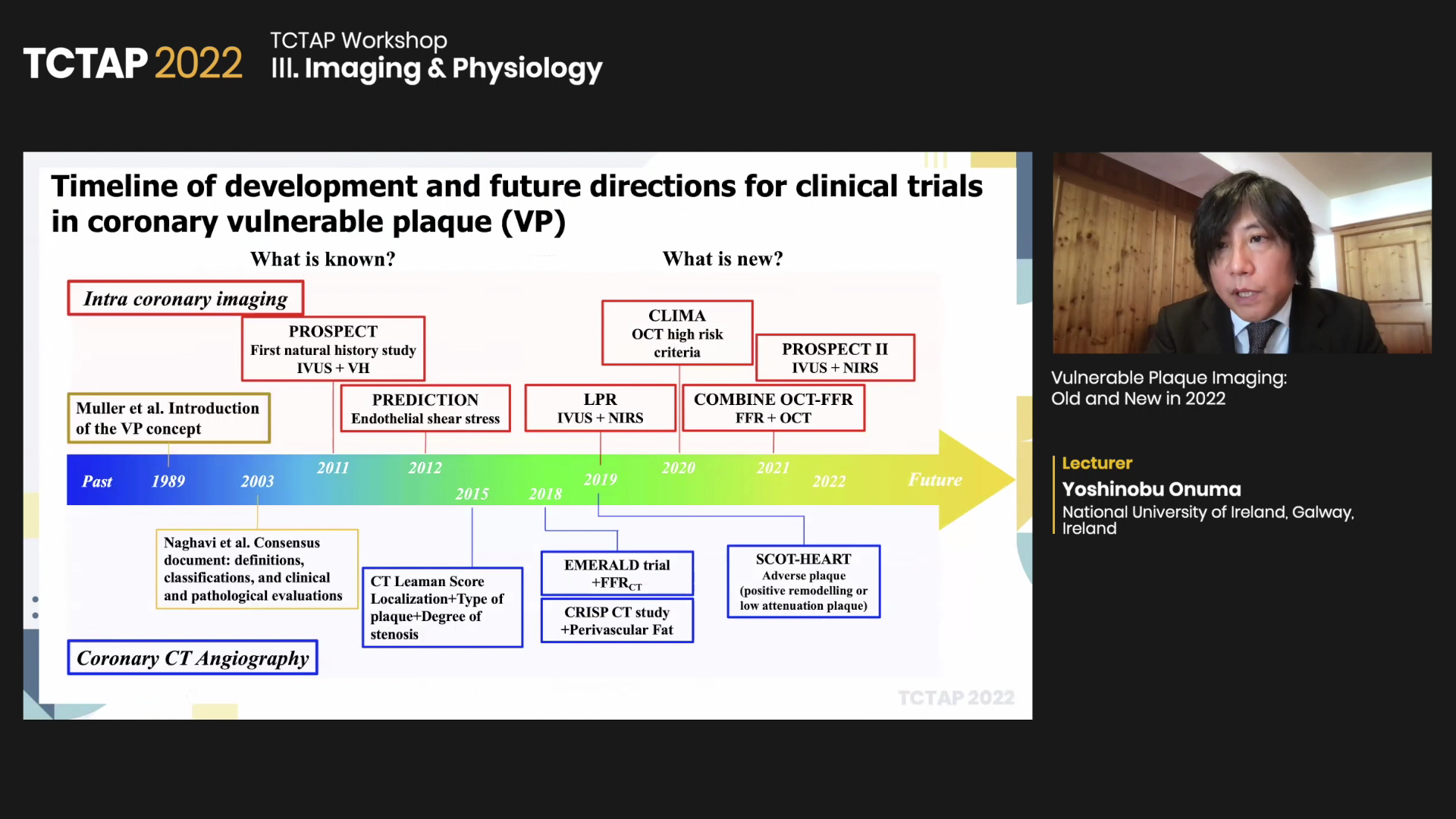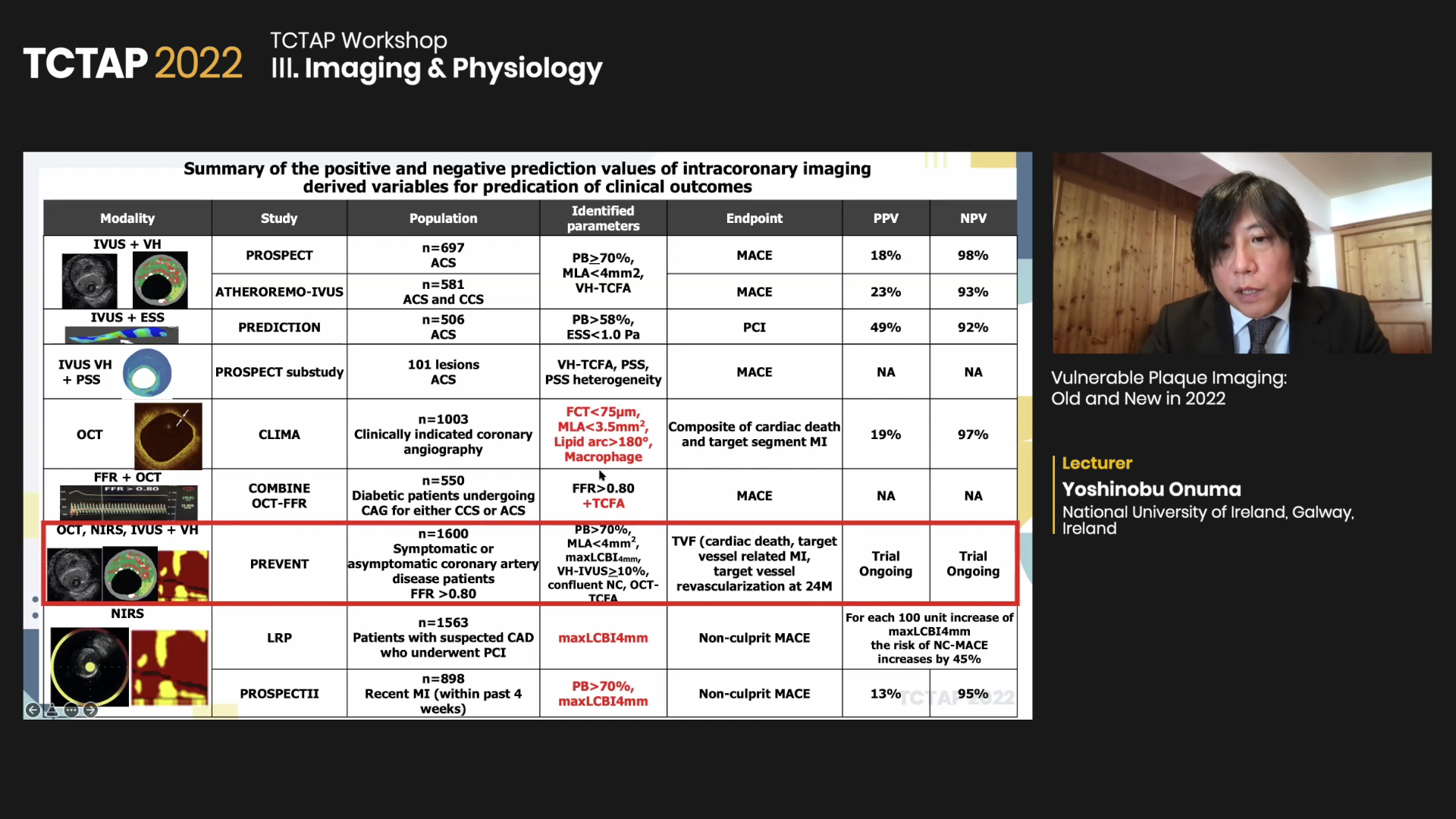The rapid development of intravascular imaging modalities is bolstering the cardiologist’s armamentarium to detect and treat vulnerable plaques, with upcoming devices expected to improve outcomes further, an expert said.
 Yoshinobu Onuma, MD, PhD (National University of Ireland, Galway, Ireland) ran through the rising development of intracoronary imaging in vulnerable plaques to discuss future directions at the 27th TCTAP 2022 on Apr 27.
Yoshinobu Onuma, MD, PhD (National University of Ireland, Galway, Ireland) ran through the rising development of intracoronary imaging in vulnerable plaques to discuss future directions at the 27th TCTAP 2022 on Apr 27.

Coronary imaging modalities like angiography and angioscopy can help detect vulnerable plaques and tailor treatment strategies to avoid complications like myocardial infarction (MI) or stroke. Vulnerable plaques are “unstable” lumps of white blood cells and lipids in the artery wall that are prone to rupture.
The advent of intravascular imaging - including intravascular ultrasound (IVUS), optical coherence tomography (OCT), near-infrared spectroscopy (NIRS) and NIRS-IVUS - refined the art of detecting vulnerable plaques, evidenced by studies reporting positive findings.
Early studies on NIRS and NIRS-IVUS, including PROSPECT, PREDICTION and ATHEROREMO-NIRS, identified the association between poor outcomes and certain plaque characteristics such as plaque burden, thin cap fibroatheroma (TCFA), minimal lumen area (MLA) and lipid core burden index (LCBI).

Recent studies such as the LRP (IVUS-NIRS), CLIMA (OCT high-risk criteria), COMBINE OCT-FFR (FFR-OCT) and PROSPECT II (IVUS-NIRS) trials further revealed new imaging-based prognostic parameters, indicating their broadening scope in the clinical setting.
“Multiple investigations have used invasive and non-invasive imaging modalities to root out precursors of culprit plaques that underlie acute cardiac events,” Onuma said. “Recently, the LRP trial, PROSPECT II study and PREVENT study revealed pivotal findings on high-risk populations stratified by maxLCBI4mm and plaque burden >70%.”
Hybrid catheters, coronary CTA for future exploration
For future directions, Onuma highlighted the potential of hybrid catheters and coronary CTA as tools for secondary and primary prevention.
The Novasight Hybrid System (Conavi Medical, Canada) and Dual Sensor (Terumo, Japan) are two promising hybrid IVUS-OCT catheters currently on the market, Onuma said. An OCT-NIRS Imaging System is also under development by James Muller, MD (Brigham and Women’s Hospital, Massachusetts, USA) and Ryan Madder, MD (Spectrum Health, Minnesota, USA).
As a potential primary prevention tool, coronary CTA was underscored for at-risk patients without prior events. Onuma noted that the SCOT-HEART, EMERALD and CRISP-CT trials on coronary CTA revealed new prognostic parameters and warranted further exploration.
“The combined catheter could further improve diagnostic and prognostic prediction capability of future events for the future of intravascular imaging, and both Conavi’s and Terumo’s hybrid catheters are already available for use,” Onuma said. “Future developments in intravascular imaging catheters and natural history studies will elucidate other predictors of vulnerable plaque and produce synergistic effects.”
Edited by

Joo Myung Lee, MD
Samsung Medical Center, Korea (Republic of)
Written by



